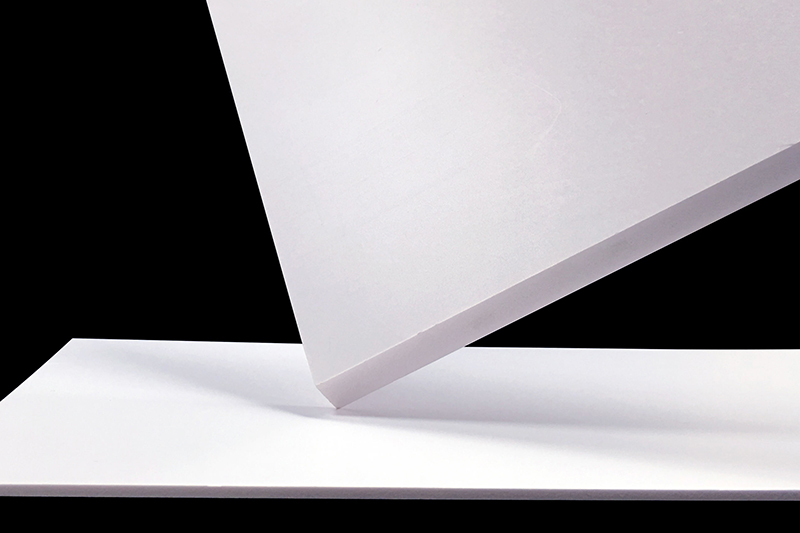PVC foam board, also known as foamed PVC or expanded PVC, has become a popular material across a wide range of industries. Its unique combination of lightweight construction and impressive strength, along with other beneficial properties, makes PVC foam board a versatile and cost-effective choice for numerous applications. This article will delve into the advantages of PVC foam board, exploring its properties and highlighting why it stands out as a superior material in various sectors.

One of the most prominent advantages of PVC foam board is its impressive strength-to-weight ratio. The closed-cell structure of the foam provides significant rigidity and impact resistance while remaining incredibly lightweight. This makes PVC foam board ideal for applications where weight is a critical factor, such as signage, exhibition displays, and construction projects. Transporting and installing large sheets of PVC foam board is considerably easier and less expensive compared to heavier alternatives like wood or metal. Furthermore, the lightweight nature of PVC foam board reduces the strain on supporting structures, simplifying design and construction processes.
The inherent durability of PVC foam board is another key advantage. It is resistant to moisture, rot, and corrosion, making it suitable for both indoor and outdoor applications. Unlike wood, PVC foam board won't warp, swell, or decay when exposed to humidity or water. This makes it a particularly attractive option for exterior signage, marine applications, and bathroom or kitchen installations. Moreover, PVC foam board is resistant to many chemicals and solvents, further expanding its potential uses in industrial settings.
PVC foam board is also incredibly versatile when it comes to fabrication and customization. It can be easily cut, shaped, routed, and formed into intricate designs using standard woodworking tools. This ease of fabrication reduces production time and costs, making it a preferred material for projects requiring complex shapes or detailed designs. PVC foam board also readily accepts a variety of adhesives and fasteners, further simplifying assembly and installation processes. This adaptability allows for seamless integration into diverse projects, ranging from custom furniture to architectural models.
In addition to its strength, durability, and versatility, PVC foam board offers excellent printing and painting capabilities. Its smooth, even surface provides a perfect substrate for high-quality printing, resulting in vibrant and long-lasting graphics. This makes PVC foam board a popular choice for signage, advertising displays, and point-of-purchase displays. Furthermore, PVC foam board can be easily painted with a variety of paints, allowing for further customization and color matching to specific project requirements. The ability to achieve a high-quality finish makes PVC foam board aesthetically appealing for a wide range of applications.
From an environmental perspective, PVC foam board offers some advantages. It is recyclable, contributing to a reduced environmental footprint. Many manufacturers produce PVC foam board using recycled PVC content, further minimizing its impact on the environment. Furthermore, the longevity and durability of PVC foam board mean less frequent replacements, reducing waste generation over time. While PVC has historically faced scrutiny regarding its environmental impact, advancements in manufacturing processes and recycling technologies are continually improving the sustainability profile of PVC foam board.
Cost-effectiveness is another compelling reason for choosing PVC foam board. Compared to materials like solid PVC, acrylic, or aluminum composite panels, PVC foam board often offers a more economical solution without compromising on performance. The lower material cost, combined with the ease of fabrication and installation, can significantly reduce overall project expenses. This makes PVC foam board an attractive option for budget-conscious projects without sacrificing quality or durability.
The versatility of PVC foam board is evident in its wide range of applications. In the construction industry, it’s used for insulation, cladding, and formwork. In the signage and display industry, PVC foam board is a staple material for billboards, exhibition stands, and point-of-sale displays. Its lightweight nature and ease of printing make it perfect for these applications. In the arts and crafts sector, PVC foam board is used for model making, mounting artwork, and creating three-dimensional sculptures. The ease of cutting and shaping, coupled with its smooth surface, makes it a preferred material for creative projects.
PVC foam board offers a compelling combination of lightweight construction, impressive strength, durability, versatility, and cost-effectiveness. Its ability to withstand harsh conditions, ease of fabrication, and excellent printing capabilities make it a superior material choice for a vast array of applications. Whether for construction, signage, or creative projects, PVC foam board provides a reliable and efficient solution that meets the demands of diverse industries. As technology continues to advance, we can expect further improvements in the sustainability and performance of PVC foam board, solidifying its position as a versatile and valuable material for years to come.
